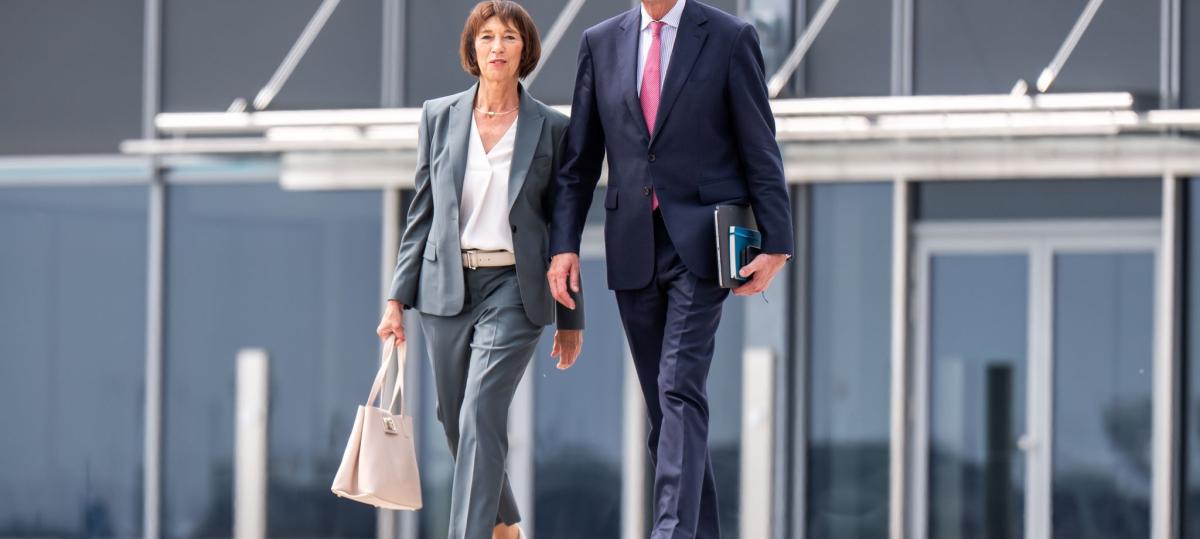Fifteen euros per night ‘for the climate’. Greece wants more sustainable tourism
:format(webp)/s3/static.nrc.nl/wp-content/uploads/2024/07/12160308/web-1307ZATnws_toerisme_spanje.jpg)
« Has everything been satisfactory? Then you only owe the tourist tax. » Those who often go on holiday or stay a night in a hotel knows: even if the costs are paid in advance, there will often be an account at the end. And that can rise considerably. Since last year, tourists in Greece have been officially paying one Climate Resilience Feewhich is in fact the same as tourist tax. As of January 1 of this year is the tax increased Up to a maximum of 15 euros per night for a room in a five -star hotel in high season (from April to October). The allowance that hotel guests pay on top of the room price for every night they are staying there is paid on the spot at the hotel (or other accommodation). Cruise ships passengers also pay an extra allowance.
The Greek government says it wants to promote a sustainable tourism model with the climate surcharge, and to also want to tackle over -tourism and home crisis. When announcing the price increase said the Greek tourism minister Olga Kefalogianni that the income will be used, among other things, for ‘preventing and repairing natural disasters’ and improving infrastructure. The proceeds also go to non -specified ‘Projects for Climate resistance’.
In recent years, Greece has been struggling with heat waves almost every summer, often with forest fires as a result.
Proceeds unclear
The Greek Tourism Confederation Sete mentions the allowance according to the Greek newspaper Kathimerini a pure income -generating tax measure And warns that it can have a negative influence on the competitiveness of Greek tourism in the long term. The organization believes that the responsibility for the financing of the National Disaster Fund should not be with ‘only one sector of the Greek economy’. Moreover, according to Sete, it is still unclear how much the fairy Last year raised and what was done with that money.
While transparency about spending is important for the effectiveness and support among residents. Ko Koens, lecturer in Tourism in Inholland University of Applied Sciences, warns against this. He calls the Climate Resilience Fee A targeted form of tax, in contrast to ‘normal’ tourist tax. « That makes it interesting. You say it implicitly: this money is used to do something about the climate crisis. But it remains so wealthy what is being done with that money. What do you do if you have no visible effects of the climate crisis in a year? Does that money disappear into a pot? »
Also for more general tourism tax, it is crucial to make clear in advance what the money was intended for, said the German professor of Sustainability Harald Zeiss in March in return for That Welt. According to him, many tourist destinations say they will use the money for, for example, financing sustainability projects or compensation for the environmental impact when introducing the tax. But how it is ultimately used in the end differs considerably; From the development of sustainable mobility to simply supplementing the municipal budget. « Because when the treasury is empty, the intended goal is often widely defined, » says Zeiss.
Read also
Drawing tourism: what works?
Overtourism
Determining a goal is not a guarantee for success, shows an experiment with entrance tickets in Venice. The popular Italian city introduced a financial threshold last year to attract fewer tourists. Visitors without an overnight stay had to buy an access card of 5 euros for 29 busy days between the end of April and mid -July. According to residents it was just as busy or even busieras other years.
The entrance tax in Venice raised 2.4 million euros – much more than in advance (and almost as much as the 2.5 million euros it had cost). This year the measure extended: The number of days for which an admission ticket is required has almost doubled, to 54 days between mid -April and the end of July. The price remains 5 euros, but those who buy an entrance ticket less than three days before his visit pay twice as much.
Koens does not expect much of it. « A fee of 10 euros, and certainly 5 euros when you are on time, you just tap it. Then you eat just an ice cream less. If you go there, you just want to see it. » But if you look at the proceeds, it can still be a good measure, depending on what happens to the money. « In Venice, overtoourism is mainly the problem, » says Koens. « What do you do for the local residents to improve their situation? To what I have understood, very little happens there. The liveability of Venice should be tackled. »
Read also
Tourists in Venice cannot be kept by 5 euros, it appears after the first summer with admission ticket
The city council of Venice states that in the summer of 2024 there was a better spread of tourists and less crowds at peak times. Koens agrees that Venice has ‘a fantastic system’ to keep an eye on where tourists are located. « You can view them as ants in a terrarium. Super nice, but what’s good about it?
If tourist taxes rise even further, it mainly affects people with less money. But, Koens emphasizes, traveling has always been elitist and according to him it is whether that is so bad. « Does it have to be so cheap that you can go on holiday three, four times a year or is it elitist to make that more expensive? Or is that – if you also look at climate change – common sense? Traveling is a huge luxury of which we realize too little how luxurious it is. »

:format(webp)/s3/static.nrc.nl/images/gn4/stripped/data121656281-8932b6.jpg)
:format(webp)/s3/static.nrc.nl/wp-content/uploads/2025/06/14184008/web-1406BUI_Minnesota.jpg)
/s3/static.nrc.nl/images/gn4/data133731772-80229b.jpg)
:format(jpeg):fill(f8f8f8,true)/s3/static.nrc.nl/bvhw/wp-content/blogs.dir/114/files/2019/07/roosmalen-marcel-van-online-homepage.png)




